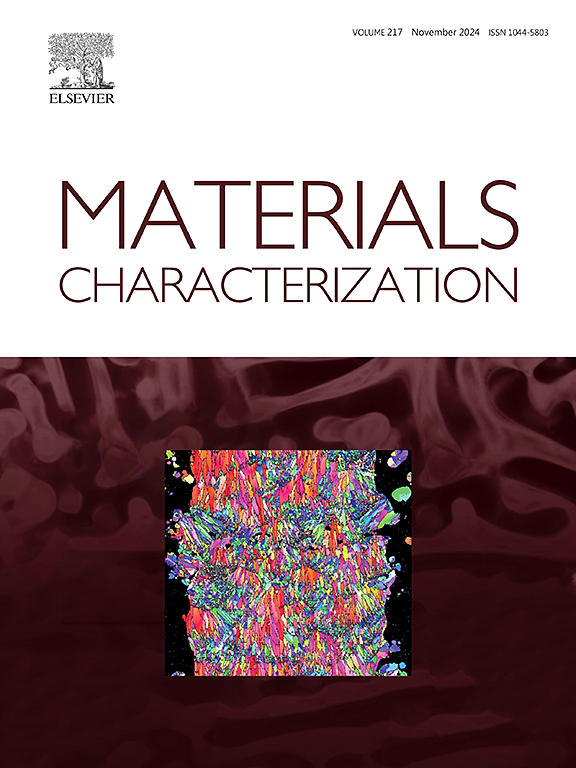(Al3Ti-TiN-AlN)/2024Al composite with an unprecedented backbone-like quasi-continuous network structure: Exceptional strength-ductility synergy and heat resistance
IF 4.8
2区 材料科学
Q1 MATERIALS SCIENCE, CHARACTERIZATION & TESTING
引用次数: 0
Abstract
Aluminum matrix composites face challenges in core structural applications under harsh environments due to grain rotation under elevated temperatures and external loads. Herein, a novel ‘Backbone-like’ quasi-continuous network structured (Al3Ti-TiN-AlN)/2024Al composite with balanced strength-ductility and heat resistance was fabricated using Ti2AlN as precursor, featuring needle-like and granular micro-Al3Ti, meso-TiN, and densely dispersed intragranular nano-AlN within the matrix. After T6 treatment, the composite achieves impressive strength-ductility compatibility (470 MPa and 6 %) at room temperature, maintains strong performance (172 MPa) at 400 °C, and exhibits a low coefficient of thermal expansion of 19 × 10−6/°C. The enhanced strength-ductility across a wide temperature range benefits from the nanoparticle pinning of dislocations and grain boundary sliding at the microscale, combined with the network skeleton's drag effect on matrix flow at the macroscale. This work extends the service temperature of 2024Al composites for structural applications to 400 °C.

求助全文
约1分钟内获得全文
求助全文
来源期刊

Materials Characterization
工程技术-材料科学:表征与测试
CiteScore
7.60
自引率
8.50%
发文量
746
审稿时长
36 days
期刊介绍:
Materials Characterization features original articles and state-of-the-art reviews on theoretical and practical aspects of the structure and behaviour of materials.
The Journal focuses on all characterization techniques, including all forms of microscopy (light, electron, acoustic, etc.,) and analysis (especially microanalysis and surface analytical techniques). Developments in both this wide range of techniques and their application to the quantification of the microstructure of materials are essential facets of the Journal.
The Journal provides the Materials Scientist/Engineer with up-to-date information on many types of materials with an underlying theme of explaining the behavior of materials using novel approaches. Materials covered by the journal include:
Metals & Alloys
Ceramics
Nanomaterials
Biomedical materials
Optical materials
Composites
Natural Materials.
 求助内容:
求助内容: 应助结果提醒方式:
应助结果提醒方式:


